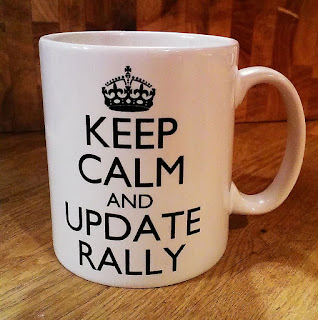 |
| Keep calm and update Rally |
In Agile, its all about the people interactions and conversations that make you more Agile, and you can get the most of them happening when you have an agile wall / 'radiator board'. These walls tell their own story about the status of any project and will attract any interested parties like moths to a light bulb. If this board is in a collaborative space it will encourage the business and technology to openly engage with it and with each other. The six conversations* you're going to have about each user story are easily enacted in this space with physical media (cards and pens) rather than a screen.
If you use desktop tools you promote people to look at their own screens rather than each other. I call desktop tools 'fridge's' as you've got to open them to see what's inside, unlike your Agile wall that is always radiating information. The human brain can happily manage about 150 items in view and in context on a wall, so only got for a supporting toolset if you're way over this amount, or you have specific geographical challenges you can't overcome with other means.
Any organisation that thinks rolling out Rally, Jira or whatever to their tech department is suddenly going to turn them Agile is starting off in the wrong direction. Toolsets can help make your processes more efficient, but they don't make you "Agile".
*A user story is a placeholder for a conversation, one that will take place about six different times before the story gets played into a scrum team.